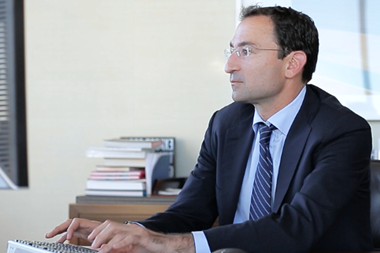City law firm Addleshaw Goddard garnered plenty of media exposure as a result of its report on improving planning efficiency, covered first in Property Week.
There was plenty to applaud or castigate depending on your point of view - mine being that we do not need to build on green belt land in order to solve London’s housing shortage.
However, it was another aspect of the report that really set me thinking: the suggestion that there should be five London boroughs rather than 32, or 33 if you count the City of London.
One cannot imagine this happening any time soon, not least because of Conservative voters in the outer London boroughs, and the fact that BorisJohnson has managed twice to persuade many Labour voters to vote for a Conservative mayor.
Moreover, there is a certain precision about the suggested number that raises doubt. Why not four, or six?
The lawyers are on to something, however, which is the problem of having large, powerful boroughs like Westminster when strategically you may want the Greater London Authority (GLA) and the Mayor to make the really big strategic decisions. Westminster (one could take other examples) is too big to push around, but it is not big enough to be truly strategic in its outlook - hence its weird obsession with trying to stop people building towers in Lambeth and Southwark.
In truth, the problem with the borough structure is one created by the Conservative government in the early 1960s. Always anxious to do a bit of gerrymandering if it will suit their cause, national and local politicians wanted to stop Labour ruling the roost in central London, as it had largely done since the formation of the London County Council (LCC) in 1889.
Their solution was to abolish the LCC and replace it with a new body, the Greater London Council (GLC), with a vastly expanded geographical area. Middlesex County Council, that useful adjunct to the LCC, had to go too. Suddenly everything from Heathrow to Romford had to have a London address and, eventually, postcode. The easy geographical relationship with the Home Counties was substituted by an almost military map line.
Most importantly, the size of the new London authorities jumped, because of the abolition of many smaller boroughs with centuries of history and a profound relationship with their neighbourhoods behind them. You might think that Conservatives would be rather opposed to the uprooting of history and tradition, but not a bit of it.
We lost those boroughs whose place names are still familiar to us: Holborn, Finsbury, Shoreditch, Camberwell, Woolwich, Poplar, Stoke Newington, Hampstead, St Marylebone, Battersea and Chelsea, among others. Outside central London, places like Tottenham lost their municipal independence, subsumed in one of the new mega-authorities, Haringey, which did a lousy job supporting it for the next forty years. Ditto the London Borough of Greenwich and its treatment of Woolwich.
The lost localism of London can be traced back to the London Government Act 1963, which introduced the changes. It was all supposed to be so efficient, but bigger rarely means better when it comes to the intimate matters of local planning and architecture, and in no time at all the new big boroughs were at loggerheads with the GLC over this and that.
Replacing the GLC with the GLA, and the introduction of a directly elected mayor, has created the possibility of more strategic coordination on the planning front, but there is still the problem of scale. If London were to end up with five boroughs only, how can the ‘villages’ be represented?
Were one to wave a magic wand, could we revive those old familiar faces, restore them to their town halls and give residents and businesses a truly local organization to which they could relate? Alas, most of the town halls have long been sold off, as has County Hall, civic pride replaced with dance classes, apartments or an aquarium. Good for the development business, but bad for democracy.
In truth, even if there were only five boroughs, you would still have to make planning applications, and there would still be the GLA, English Heritage and the Department for Communities and Local Government exercising their power and influence. There would still be turf wars. And there might be even greater local opposition to proposals that were being supported by a borough remote, by definition, from most of the inhabitants it. Back to the drawing board.
Paul Finch is programme director of the World Architecture Festival
































No comments yet